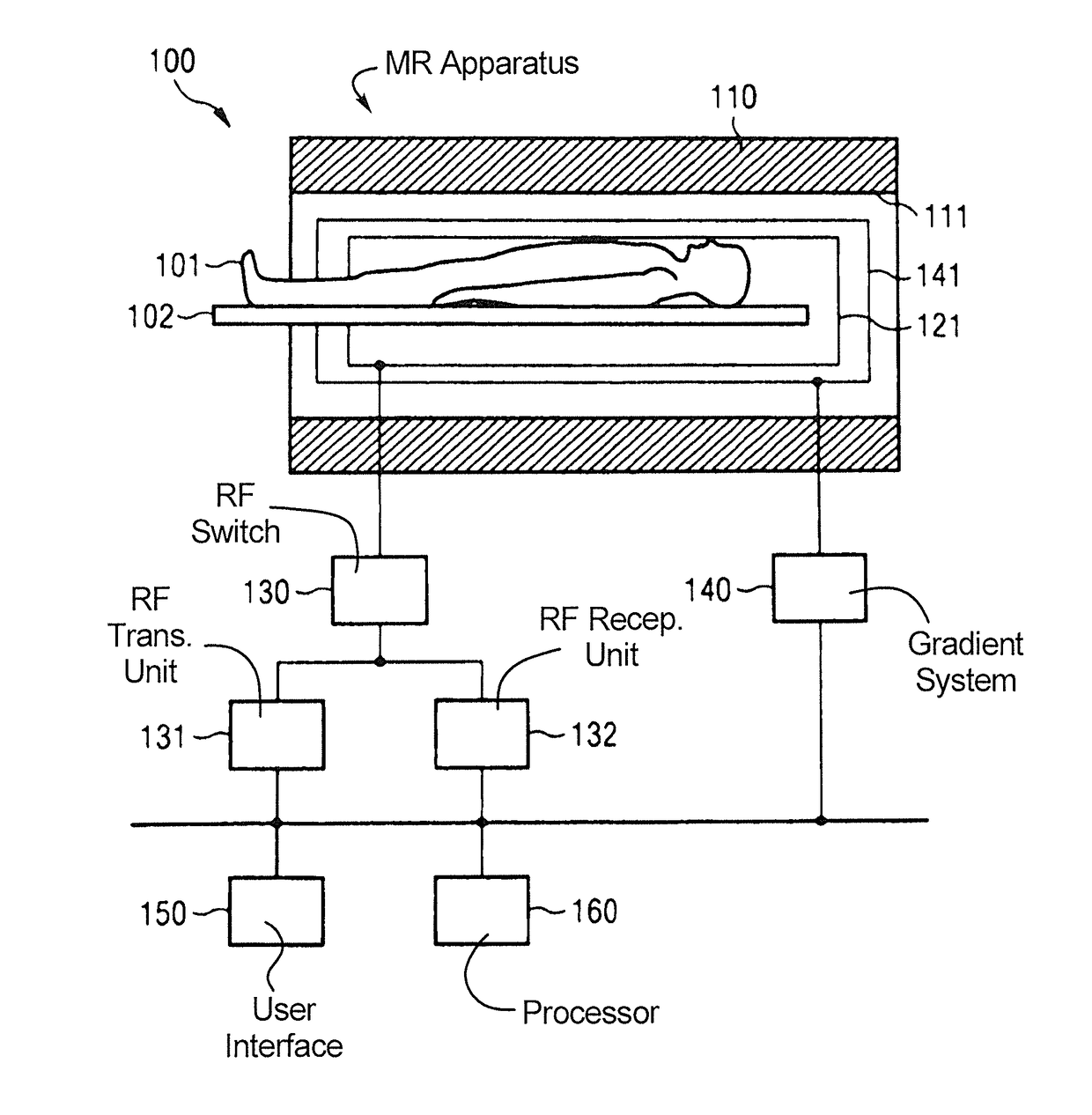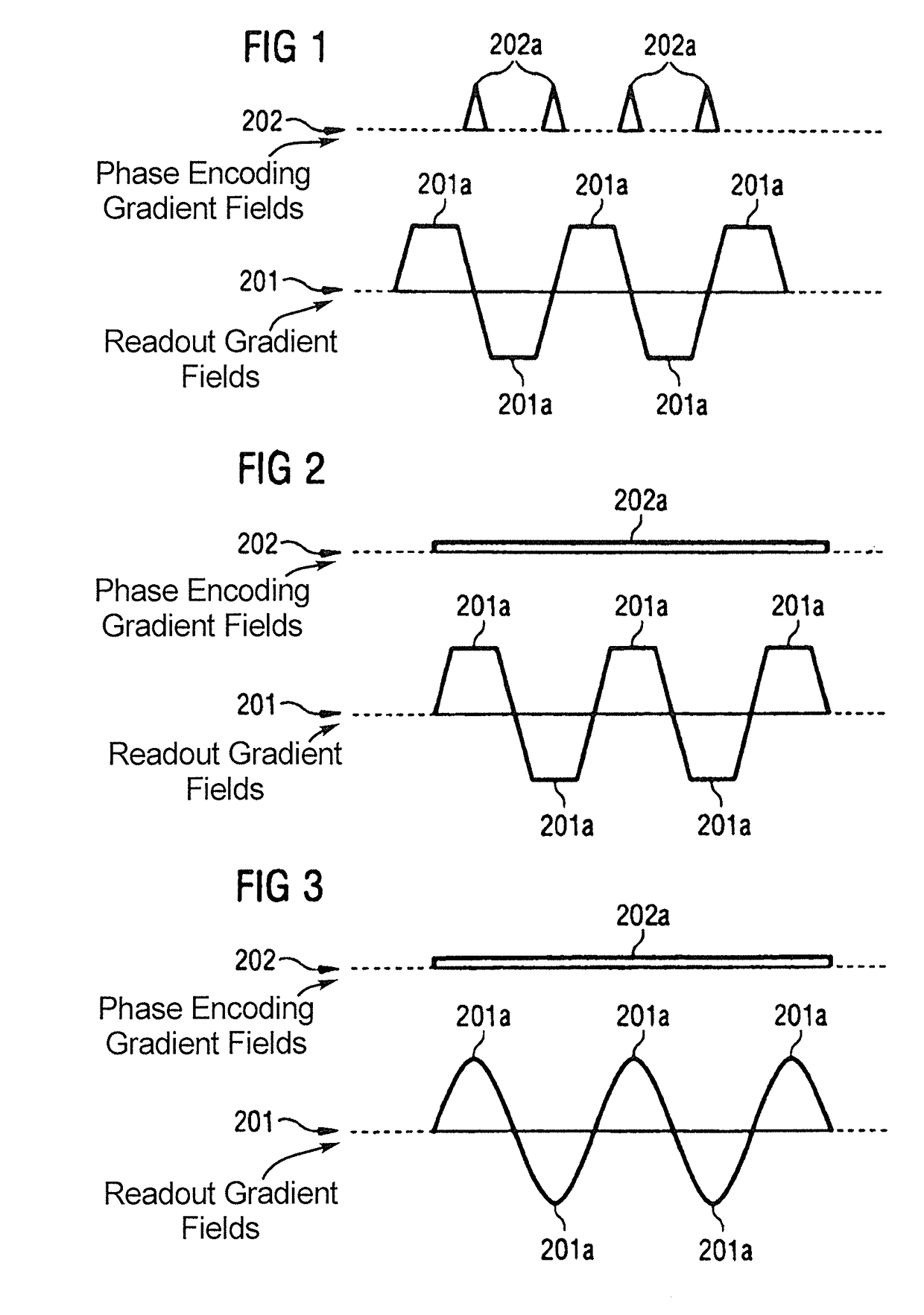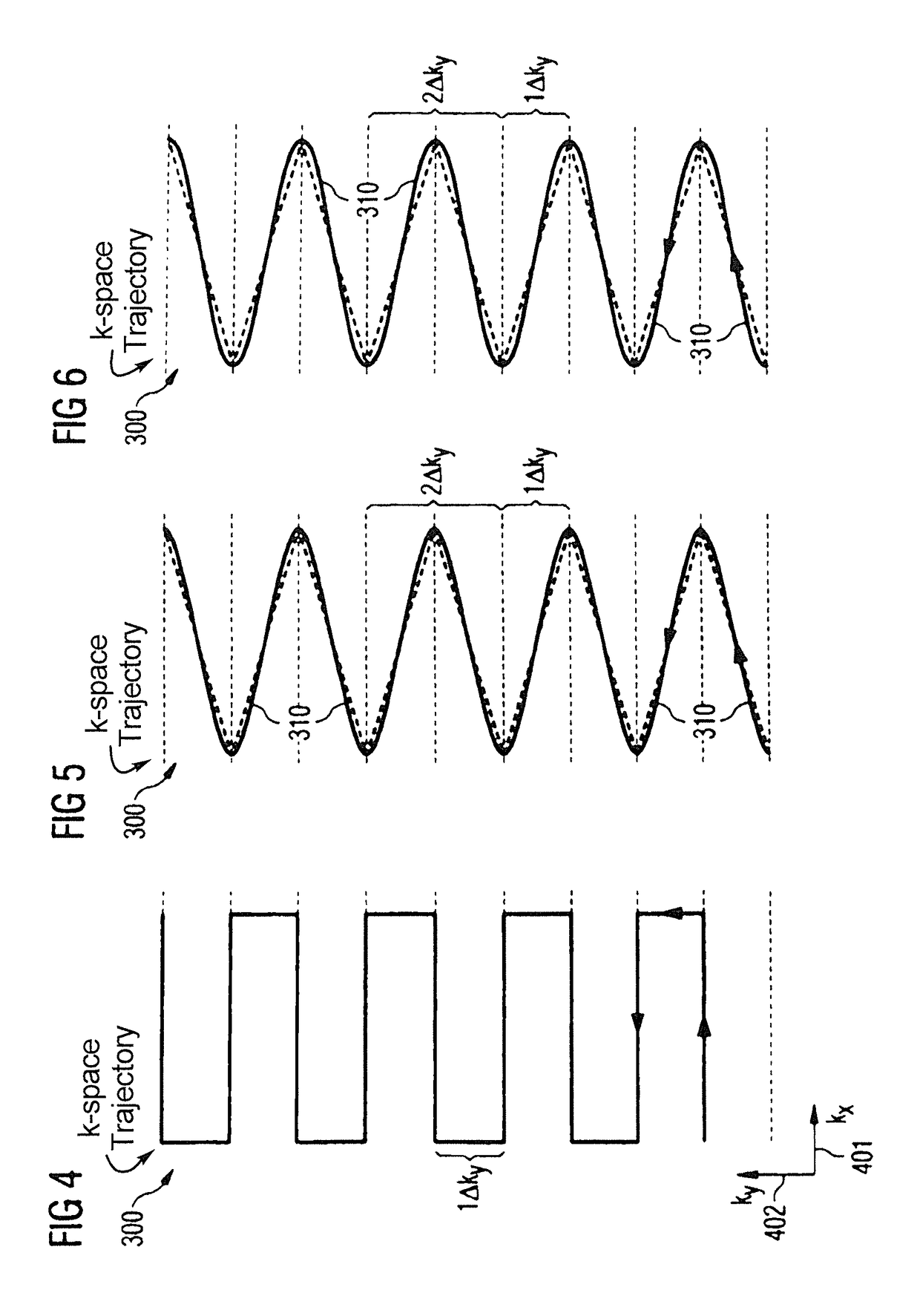Method and magnetic resonance apparatus for echo planar imaging with data entry into k-space along a zigzag trajectory
a magnetic resonance imaging and data entry technology, applied in the field of echo planar magnetic resonance imaging, can solve the problems of image distortion, limit the possible resolution, and further technical requirements of mr apparatuses and epi imaging to be comparabl
- Summary
- Abstract
- Description
- Claims
- Application Information
AI Technical Summary
Benefits of technology
Problems solved by technology
Method used
Image
Examples
Embodiment Construction
[0097]Hereinafter, the present invention is illustrated by means of preferred embodiments and with reference to the drawings. In the figures, like reference numerals denote like elements. In the figures, techniques for EPI MR imaging are described. In general, the techniques according to various embodiments of the present invention allow implementing zigzag-type trajectories having well-defined and specific parameters, e.g., curvature and inclination and / or distance of the flanks, for the acquiring of raw data. In particular, these techniques allow implementing zigzag-type trajectories for the acquiring of raw data which have flanks with comparably small curvature, i.e., particularly linear flanks. Such trajectories are referred to as ideal zigzag-type trajectories hereinafter, wherein it should be understood that particular technically caused deviations, respectively small residual curvatures can be present. Further techniques for the application of PPA methods, i.e., parallel imag...
PUM
 Login to View More
Login to View More Abstract
Description
Claims
Application Information
 Login to View More
Login to View More - R&D
- Intellectual Property
- Life Sciences
- Materials
- Tech Scout
- Unparalleled Data Quality
- Higher Quality Content
- 60% Fewer Hallucinations
Browse by: Latest US Patents, China's latest patents, Technical Efficacy Thesaurus, Application Domain, Technology Topic, Popular Technical Reports.
© 2025 PatSnap. All rights reserved.Legal|Privacy policy|Modern Slavery Act Transparency Statement|Sitemap|About US| Contact US: help@patsnap.com



